Do you want to know how profitable is avocado farming in Kenya? In this blog post, we will estimate the costs and profits of growing the Hass avocado for export on an acre. You can use the same as a guide to make other cost and benefit analyses for other avocado varieties such as Fuerte, Puebla, or Linda.
The common costs of your avocado farm include buying seedlings, irrigation equipment, planting, fertilizer application, weed control, and pest control among others. On the other hand, your income will come from selling avocado fruits in the local and international markets.
Why Avocado farming?
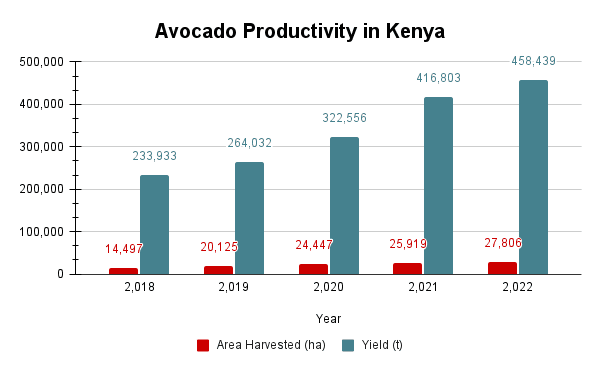
The trend in commercial avocado farming is growing fast in Kenya given its many economic, social, and nutritional benefits. Some of the reasons you can consider growing them as horticultural crops include;
Read Next; Which Are the Best Avocado Varieties in Kenya?
- Profitable: Avocado farming is a leading foreign exchange earnings earner through export, with Kenya being the leading exporter in Africa.
- Rural Development: The avocado sector creates youth job opportunities in rural areas and a substantial income source for elderly smallholder farmers leading to improved living standards
- Nutritional Benefits: Avocado farming contributes to improved local nutrition, addressing dietary deficiencies and enhancing overall food security.
- Environmental Benefits: Promoting sustainable and eco-friendly avocado farming practices can mitigate environmental impacts.
Is there a demand for Avocados in Kenya?
Do you know that Kenya ranks in the 9th position among the top avocado exporters globally? With a total export value of $128.955 million and a quantity of 103,240 tons. Kenya has shown consistent growth, recording a noteworthy 12% annual increase in quantity and a 5% growth in value between 2018 and 2022. This places Kenya as a promising player in the global avocado market.
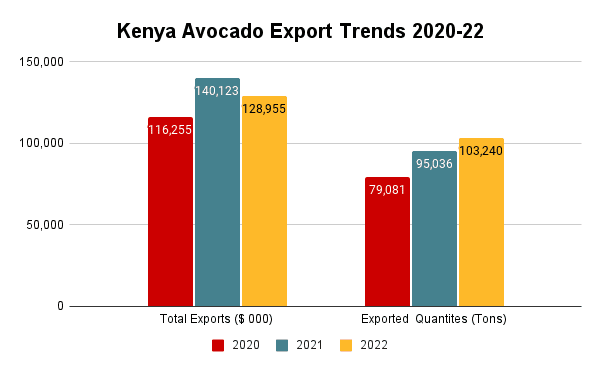
According to data from FAO, there has been a steady interest in avocado farming. The land under avocado cultivation has almost doubled from 14,497 ha in 2018 to 27,806 ha in 2022. Similarly, the total yields had a similar trend, rising from 233,933 tons in 2018 to 458,439 tons in 2022. This productivity trend reflects the crops’ potential profitability drawing individuals, businesses, government, and NGOs to invest in the golden cashcrop.
In terms of export trends Kenya imported avocados worth $128.955 million in 2022 alone. They sold each ton of avocado at $1,249 in 2022 which was a slight drop from $1,474 in 2021 showing the demand for avocado in international markets. The Key destinations where small-scale farmers can sell their quality fruits are the Netherlands, UAE, France, Spain, Saudi Arabia, and Turkiye. Other notable buyers of Kenya’s dry or fresh avocados are the U.K., China, Egypt, and Russia.
How Profitable is Avocado Farming in Kenya
To determine how profitable is Hass avocado farming, we will use the cost-benefit analysis (CBA) method. It will estimate the earnings and costs of raising an acre of the avocado orchard in Kenya. It will later compare the benefits against expenses to budget your potential profits.
Avocado Farming Revenues in Kenya
The revenues of an avocado farm can easily be determined using the simplified formula below
Total Revenue = (No of Trees/Acre) x (Average Yield/ Tree) x (Price/ Kg)
or simply
Total Revenue = (Total yields/acre in Kg) * (Price/Kg)
The average yield of a Hass avocado tree in Kenya is approximately 30 fruits per tree in two to three years or an average of 300 to 400 kilograms per acre. At four years of age, Hass avocado trees have the potential to produce between 200 and 500 fruits each. By the tenth year, their yield stabilizes, resulting in an estimated average of 1000 fruits per tree
In 2022, the Hass avocados had an average farm gate price of Ksh 18 per kilogram and an average export price of Ksh 150 per kilogram in Kenya. For a farmer with around 100 Hass avocado trees per acre, this could potentially translate to earnings of around Ksh 300,000-600,000 per year, considering the age of trees and adopted management.
Avocado farming costs per acre in Kenya
The typical costs of starting an avocado farm in Kenya can range from Ksh 150,000 to Ksh 200,000 per acre. This includes expenses such as seedlings, irrigation equipment, and transplanting. For example, the cost of 100 Hass avocado seedlings at Ksh 400 each would be Ksh 40,00. and 1000 kg of manure at Ksh 10,000. Additionally, other costs such as fertilizers, pest control, and labor To Understand these costs better, we will break them into fixed and flexible costs
The fixed costs include the capital costs you incur in year one to establish your farm. They include the following major ones.
Land Acquisition
The first expense is to secure land in an ideal location for optimal production. While the cost of buying or leasing land in Kenya varies from place to place, the post assumes a ksh 75000 rate for demonstration purposes. The points below are a summary of agroecological conditions to consider
- Suitable temperatures range from 20 to 30°C (68 to 86°F).
- well-distributed rainfall, ideally receiving an annual precipitation between 800 to 1700 mm.
- Deep, fertile, well-aerated, particularly sandy or alluvial loams with neutral or slightly acid pH values (pH 5 to 7) are desirable.
Your orchard must be protected against livestock and wild animals. These cause damage to the leaves, shoots, flowers, and fruits, thus preventing the trees from developing properly. Your original cost may include fencing costs.
Land Preparation
After acquiring land, you need to prepare it for avocado farming. This will include clearing tree stumps, stones, and perennial weeds. Second, do deep plowing followed by 2-3 harrowings. The farm may also need to establish a windbreak using trees such as casuarina and grevillea.
Soil testing is done at this stage to determine its nutrient and organic materials content. You will use these results for fertilizer choice and application rates. In the same process, analyze your irrigation water to make sure it is potable in quality.
Seedlings
You should buy disease-free and high-quality hass avocado seedlings from a registered nursery such as JKUAT, Kakuzi, or Oxfarm. Considering the price of avocado seedlings to be Ksh per seedling, your 100 seedlings will go for Ksh 20,000.
Planting costs
The key cost of planting labor is preparing to plant holes manually. Considering each is prepared at Ksh 50. You will end up spending Ksh 7,000. You can hire laborers to dig the holes or use a hand-drilling machine to make the task easier.
Fertilizers
The other cost component is for applying manure and avocado planting fertilizer. The type of fertilizer you will use will depend on the soil testing results. For demonstration purposes, you can consider using farm yard manure and planting fertilizers and following general application rates.
- Manure – 1000 KG @ Ksh 10,000 Manure is essential in providing the necessary nutrients for the avocado trees to grow healthy and produce high yields.
- NPK Fertilizer – 2 Bags @ Ksh 3500 Each = Ksh 7,000; NPK fertilizer is rich in nitrogen, phosphorus, and potassium, which are vital for the growth and development of avocado trees.
Pruning
Formative pruning during the first years is desirable to encourage lateral growth and multiple framework branching.
In later years, pruning is mainly undertaken to influence the size, quality, and quantity of the fruit. It includes the removal of undesired shoots inside the canopy, the pruning of broken or diseased branches, and the shortening of those touching the ground.
The costs of purchasing pruning materials and labor can be around Ksh 6000 before the tree matures.
Pest and disease control
Avocado farming in Kenya is affected by various pests and diseases that can cause significant damage to the crop. Some of the key pests that affect avocado trees include spider mites, insect borers, and scales.
- Spider mites cause brown spots on leaves and fruits, which increase leaf falls. Proper pruning and irrigation can control them.
- Insect borers tunnel into avocado trees and lay eggs, causing branches to weaken and fall off. To prevent their spread, cut off infected branches.
- Scales are small, stationary brown-greenish insects often found sucking sap from the leaves. Although they do not cause internal damage, their presence on the skin could affect the fruit’s marketability.
Key diseases that affect avocado trees include avocado root rot, scab, and anthracnose.
- Avocado root rot is a serious and common disease caused by Phytophthora cinnamomi, which is a fungal pathogen that thrives in moist, poorly drained areas. It causes pale wilted leaves and very small fruits. When planting, hot water treatment of seeds and grafting can help prevent this.
- Scab is caused by Sphaceloma perseae, a fungus that attacks fruits, twigs, and leaves. The symptoms are oval or irregular spots on the fruits. Poor drainage accelerates the growth and spread of the fungus.
- Anthracnose is a fungal disease that causes dark, sunken lesions on the fruit, leaves, and twigs.
Integrated pest management practices, such as monitoring and controlling pests and diseases, can help reduce the use of chemical pesticides and promote a healthy ecosystem. By adopting these practices, you can effectively manage pests and diseases in their avocado orchards, ensuring a healthy plantation and high yields.
Weeding
Timely weed control and soil management are necessary to prevent competition from weeds for sunlight, water, and nutrients. There are five ways you can manage this on your farm. They are mechanical cultivation, manual weeding, intercropping, mulching, and use of herbicides. Each has its pros and cons.
Irrigation
Newly planted trees should be irrigated immediately with enough water (15 – 20 liters) to settle the soil around the bale and to wet the roots thoroughly. A Drip Irrigation System for a 1 1-acre avocado Farm can go for Ksh 120,000. It is essential to provide a consistent supply of water to the avocado trees, especially during the dry seasons. Each tree must be mulched which helps to reduce water loss through evaporation and controls weeds. Keep the mulch at least 10 cm from the trunk to deprive harmful pests of a hiding place next to the tree.
Did you Like the Post? Let us know below
Agcenture.com is your best agriculture, food & health blog.
Thank you for following us on Facebook, Twitter (X), LinkedIn, YouTube, and WhatsApp @ Agcenture for the latest updates.
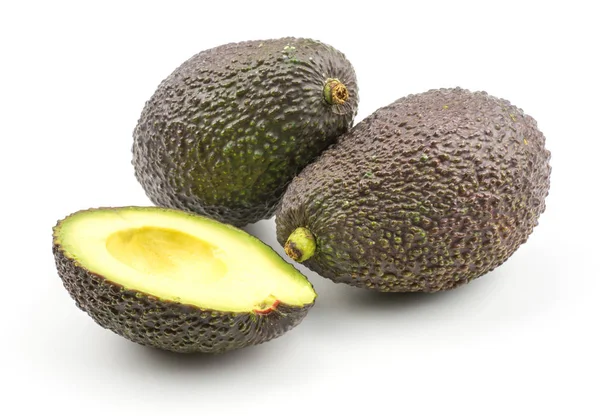
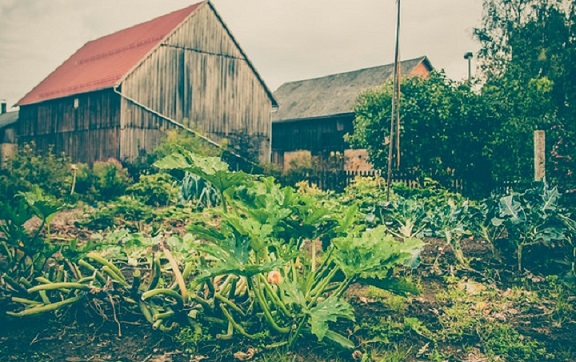
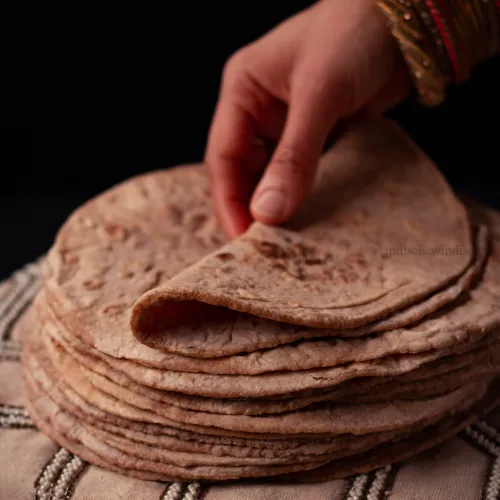
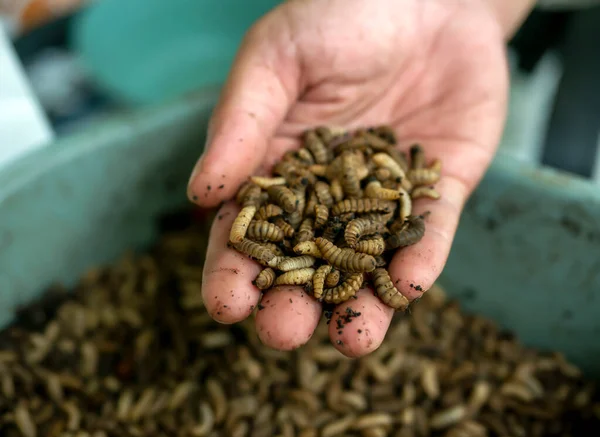
Which month is good for planning avocado trees